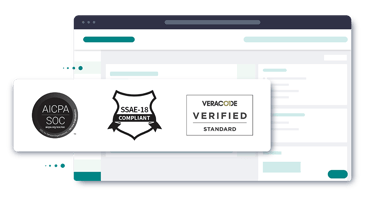Improving Development and Training for a More Successful Board of Directors
Better Board Training and Education
The ever-changing quality of the marketplace today requires that boards are continually evolving and growing to meet the needs of their organization. This constant evolution calls the board to go above and beyond the duties and responsibilities they are used to. In addition to the traditional planning and oversight responsibilities, boards must now pay attention to board training topics, cybersecurity, and risk. The best development implementations occur when a specific person or committee takes ownership of the process. Decide within your board who will make director development a priority and who will shepherd that process.
Make ongoing education opportunities for the board of directors a priority. As your organization grows, the needed skills on the board may also change. Focusing on ongoing education opportunities will create new skills and foster more knowledge within your current board of directors. Many boards put their current directors’ training lower on the priority list in favor of focusing on immediate issues. Ignoring the growth of current directors is shortsighted and can hinder a board of directors’ long-term success.
New director onboarding is an area where boards can start and see immediate progress. New board directors should have a more comprehensive understanding of the organization and the industry than boards have been providing. By increasing the quality of training for new directors, the board will begin to see positive growth, which will hopefully lead to financial success.
Training Topics to Include
Organizational Goals and Missions
Rather than assume your new director is up to speed on your organization’s mission statement and goals, prevent future misunderstandings by laying these items out in a formal way. Sharing these sentiments is often part of the interview or recruitment process, but it is also good practice to document them as well as recording that the board member is aware of them.
Governance Best Practices
More than likely, the individual being onboarded will understand basic governance practices. However, it is a good practice to explain these expectations and how this particular board adheres to them. That way, you can be sure the new board member agrees with and will work within governance best practices. For onboarding, set expectations and manage understandings by laying the foundation of what your board strives for.
Board Dynamics
The topic of board dynamics covers the functional roles of each member as well as the more personal interactions between board members. Board composition and dynamics are critical to positive performance. Within the framework of positive board culture, the board will leverage their diverse skill sets to excellent advantage. Outline the roles, responsibilities, and expectations of each seat of the board as well as any defined processes that may be role-based. Strategically sharing this information can head off future personnel issues within the board. Sharing specific skill sets of directors doesn’t necessarily need to be a formal document, but it is helpful for future conversations to have an understanding of everyone’s areas of expertise.
Check out this article on personality types in the boardroom to gather a better understanding of the inner workings of your board!
Cybersecurity
Cybersecurity is an incredibly important topic for organizations of all sizes across all industries. With the worldwide transition to more digital information comes the added need for increased protection. Training programs must include a cybersecurity policy that covers device safety, communication security, document sharing, etc. Include annual updates to procedures and expectations to ensure that organizations stay compliant and protected against threats and cyber risks.
ESG
This topic may be covered in your training section that covers organizational goals, but if it isn’t, it is vital to share that information with new members. Even seasoned members of your board may not be familiar with the formal components of ESG, so sharing information regarding those initiatives and how they impact the organization can be beneficial to the whole board. Environmental, Social, and Governance objects can influence many decisions in the boardroom, so the entire board must have a comprehensive understanding of the organization’s initiatives.
Some organizations opt for a learning management system to control their board onboarding and development processes and others choose a more straightforward standard “handbook” to lay out the expectations for their board. Whatever method you decide to take, ensure that it is someone’s responsibility to keep the materials updated and current with regulations and requirements for your industry.
Streamline Board Processes with Digital Tools
Digitizing governance processes makes them far more scalable and secure. With this transition to digital processes in the boardroom, cybersecurity becomes an even more critical factor. Ensure that all training materials address cybersecurity issues and procedures and that the training materials are kept up to date. As technologies change, the need for training beyond new board members may arise. Consider these refresher training sessions when creating processes within your board for director development.
Pro tip: Check out this free guide on what to include in your cybersecurity agreement for your board of directors.
With more efficient digital processes, the administrative load of your directors should decrease. This will free up valuable time and mental space for your directors to address more pressing issues facing your organization. Many boards of directors are still operating in the traditional way by distributing physical paper agendas, meeting minutes, and board books. If your board is a long way from going fully digital, check out this article on the importance of digital in the boardroom.
Govenda for Better Governance
Board management software solutions offer a comprehensive answer to these top issues facing boards today. Govenda, a fully integrated suite of governance tools, answers the call for improving every board process. Utilize Govenda’s board portal to digitize and streamline your governance processes, share and implement education strategies, and plan for long-term succession. Partnering with a secure board portal can create a single place for connection, collaboration, and governance to be the focus. With tools like secure messaging, discussions, annotations, and more all protected by rigorous security protocols, Govenda is prepared to support your organization on the journey to better data protection. Supplying the best board portal available, empowers our clients to implement efficient governance practices. Let’s start the conversation and see if Govenda is right to be your governance technology partner.
Other posts you might be interested in
View All Posts
Improving Data Protection Conversations in the Boardroom
Read More
Building a Board Member Skills Inventory to Highlight and Procure Board Talent
Read More
The Critical Role of a Secure Board Portal for the Chief Information Security Officer
Read MoreSubscribe to email updates
Get updates delivered directly to your inbox.
 Board Management Software for Better Governance
Board Management Software for Better Governance Govenda Brochure
Govenda Brochure